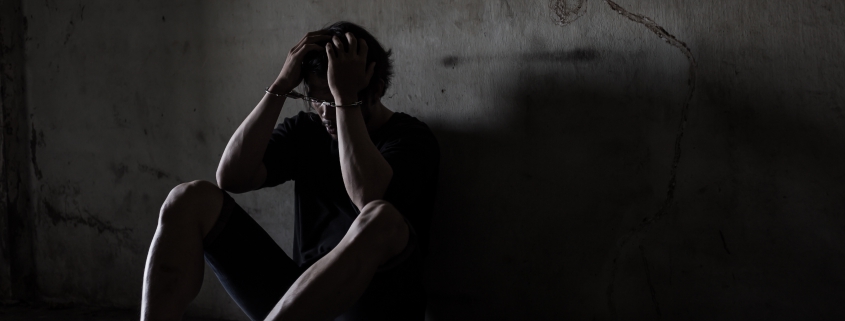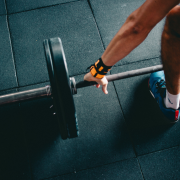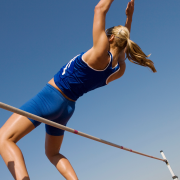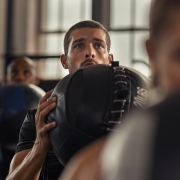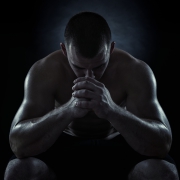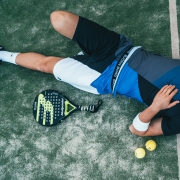What is Athlete Burnout And How Do You Prevent It?
Burnout is a term thrown around like confetti – we often hear students, teachers, and others speak of burnout as if it’s normal. But it’s not – burnout can be emotionally draining, negatively impacting your work, home, and social life.
In fact, upwards of 76% of employees experience burnout “at least sometimes” according to a 2020 study (8).
And while burnout is somewhat normalised in the workplace, it is often not spoken of in the world of sport.
Much like a marathon runner “hits the wall” and suddenly has no energy to finish their race – many athletes, young, elderly, elite, or recreational, encounter burnout and don’t know how to combat it.
There’s an invisible wall plastered in a lack of motivation, increased fatigue, decreased performance, and perhaps even physical pain.
This blog post will explain what athlete burnout is, how common it is, and how you can prevent and overcome burnout using a few psychological tips.
What is athlete burnout?
Athlete burnout is often characterised as a lasting experience of emotional and physical exhaustion. As a result, many athletes experience a lack of motivation, a reduced sense of accomplishment, and perhaps even withdrawal from their sport, as stated by a 2007 study (3).
Overtraining syndrome and athlete burnout often go hand-in-hand. When an athlete overtrains, they fail to recover adequately from training or competition.
The side effects of overtraining include hormonal changes, weakening of the immune system, and physical fatigue. But often, overtraining also comes with negative psychological changes, including an increased risk of mental health issues such as depression, a reduced sense of self-accomplishment, sport devaluation (3) and in some instances, a likelihood of developing an eating disorder (4).
This is why Rewire assesses emotional and cognitive aspects of readiness, helping to combat overtraining, burnout, and emotional and mental fatigue. Assess your readiness for free to better understand your body mentally, physically, and emotionally.
How common is burnout in sports?
The prevalence of burnout is somewhat unknown due to a lack of validity in the recording process. But a 2007 study containing 980 elite adolescent athletes found that an estimated 1-9% of athletes experience burnout, with a further 1-2% experiencing high levels of burnout (4).
Another study of burnout assessing elite handball players (458 participants, male and female) aged 14-18 years old found that those who experienced burnout were more likely to quit handball years later than those who did not experience burnout (6).
Further research suggests overtraining and burnout to affect between 30-35% of adolescent athletes (7). This is supported at the elite level too, with the American College of Sports Medicine reporting an estimated 35% of elite athletes to suffer from disordered eating, burnout, depression, and/or anxiety (1).
So, what can we conclude from this? Athlete burnout is more common than we may think, especially among the population of elite and adolescent athletes, with upwards of 30-35% of athletes experiencing burnout.
This could be due to increased pressure or juggling many responsibilities, although further research would be helpful towards understanding burnout.
How to prevent burnout in athletes
The side effects of burnout in athletes can be adverse, including an increased risk of depression, further psychological stress, and a lack of motivation (5), as previously discussed.
But how do you prevent burnout? Athlete burnout is a personal experience, however, mindfulness and acceptance of burnout are two important initial stages of recovery.
Alongside acceptance and understanding the need to recover, certain cognitive-behavioural interventions may help lessen burnout symptoms (3).
Examples of interventions you can try include:
- Visualisation
- Reinforced positive mantras
- Journaling and self-reflection
Keep reading to find out more about each technique and how they can help not only prevent burnout, but help you recover if you do encounter burnout.
Visualisation
Visualisation is one of the oldest tricks in the book when it comes to mental strategies.
Imaging a scene and taking in the sights, sounds, and smells allows you to practice scenarios and build situation-specific confidence.
Typically, visualisation is used for practising serves, kicking a ball, running through your cornering technique, and so forth.
But the concept can also be applied to burnout – visualising success, feeling energised to train, and picturing your support network to push you on.
Reinforced positive mantras
Positive mantras are statements you tell yourself to increase confidence.
Examples of reinforced positive mantras include:
- I feel mentally stronger
- I’m energised and ready to train
- I enjoy training
- I perform well under pressure
You can also apply positive mantras to athlete burnout, telling yourself you are training hard enough, you’re not stressed, and you are prepared for competition.
Top tip: write positive mantras on a script or in your notes and repeat these to yourself daily. You can also customise these in the Rewire app as part of your pre-workout priming.
Journaling and self-reflection
Although not a psychological trick, journalling is a great method of self-reflection, noting down your thoughts and clearing your mind.
If you’re suffering from athlete burnout, then it’s likely you’ll encounter negative self-talk and sport devaluation.
Get these thoughts down on paper, throw them away, and clear your mind.
You can use the Rewire Fitness app to track your physical, emotional, and psychological wellness states.
Our mindset recovery system consists of evidence-based protocols to promote effective mind (and body) recovery, including guided breathing, self-talk techniques, visualisation, and even binaural beats.
Prehabilitation for athlete burnout
The role of prehabilitation is thought to help prevent overuse injuries, or if you’re already injured, it should help speed up recovery (2).
But what if we applied the same concept to athlete burnout? By performing psychological skills and techniques, you can strengthen your mind for the stress of sport, whether that’s coping with burnout or a physical injury.
Combat burnout and become a stronger athlete
Athlete burnout is on the rise, with athletes experiencing a lack of motivation, increased stress and fatigue, and a reduced sense of accomplishment.
And while you can be running, cycling, or powerlifting one day, you may feel like you’ve hit that metaphorical wall the next.
So, to summarise burnout in athletes:
- Athlete burnout is on the rise (affecting upwards of 35% of athletesaffecting anywhere from 1-9% of athletes)
- Symptoms of burnout include decreased motivation, increased stress, and even sports withdrawal
- Mental training and time away from sport may help combat burnout
- Pre-hab is not only effective for preventing injury, but also burnout
Start the Rewire Fitness app for free and begin mental training today, whether you’re fighting burnout or want to improve your psychological strength.

Join Our Community!
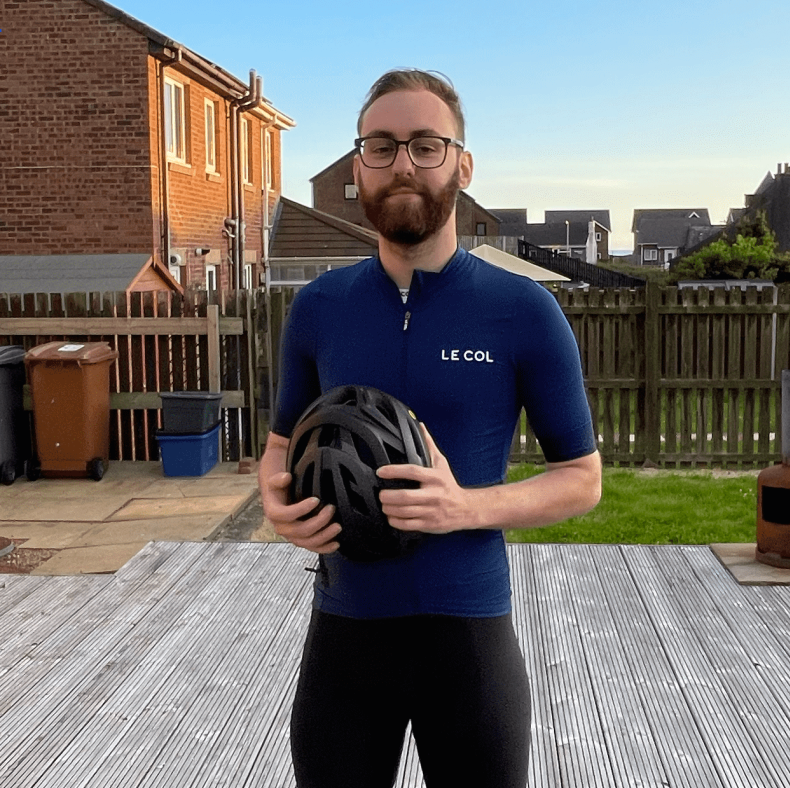
Matthew Mace is an avid cyclist, runner, and freelance content writer with a keen interest in psychology and injury. He studied sport and exercise at Durham University and now writes about cycling, wellness and mental fitness.
Sources:
- ACSM_CMS. 2022. News Detail. [online] Available at: <https://www.acsm.org/news-detail/2021/08/09/the-american-college-of-sports-medicine-statement-on-mental-health-challenges-for-athletes#:~:text=Professional%20and%20elite%20athletes%20also,%2C%20depression%20and%2For%20anxiety> [Accessed 14 June 2022].
- ECU Online. 2022. How Prehab Helps in Preventing Injuries | ECU Online. [online] Available at: <https://online.ecok.edu/articles/prehab/> [Accessed 10 June 2022].
- Gustafsson, H., 2007. Burnout in competitive and elite athletes (Doctoral dissertation, Örebro universitetsbibliotek).
- Gustafsson, H., Kenttä, G., Hassmén, P. and Lundqvist, C., 2007. Prevalence of burnout in adolescent competitive athletes. The Sport Psychologist, 21, pp.21-37.
- Gustafsson, H., DeFreese, J.D. and Madigan, D.J., 2017. Athlete burnout: Review and recommendations. Current opinion in psychology, 16, pp.109-113.
- Isoard-Gautheur, S., Guillet-Descas, E. and Gustafsson, H., 2016. Athlete burnout and the risk of dropout among young elite handball players. Sport Psychologist, 30(2).
- Momsteam.com. 2022. Burnout In Youth Athletes: Risk Factors, Symptoms, Diagnosis, and Treatment | MomsTeam. [online] Available at: <https://www.momsteam.com/burnout-in-youth-athletes-risk-factors-symptoms-diagnosis-treatment#:~:text=Although%20it%20is%20difficult%20to,to%2035%25%20of%20adolescent%20athletes> [Accessed 14 June 2022].
- Wigert, B., 2022. Employee Burnout: The Biggest Myth. [online] Gallup.com. Available at: <https://www.gallup.com/workplace/288539/employee-burnout-biggest-myth.aspx> [Accessed 14 June 2022].

